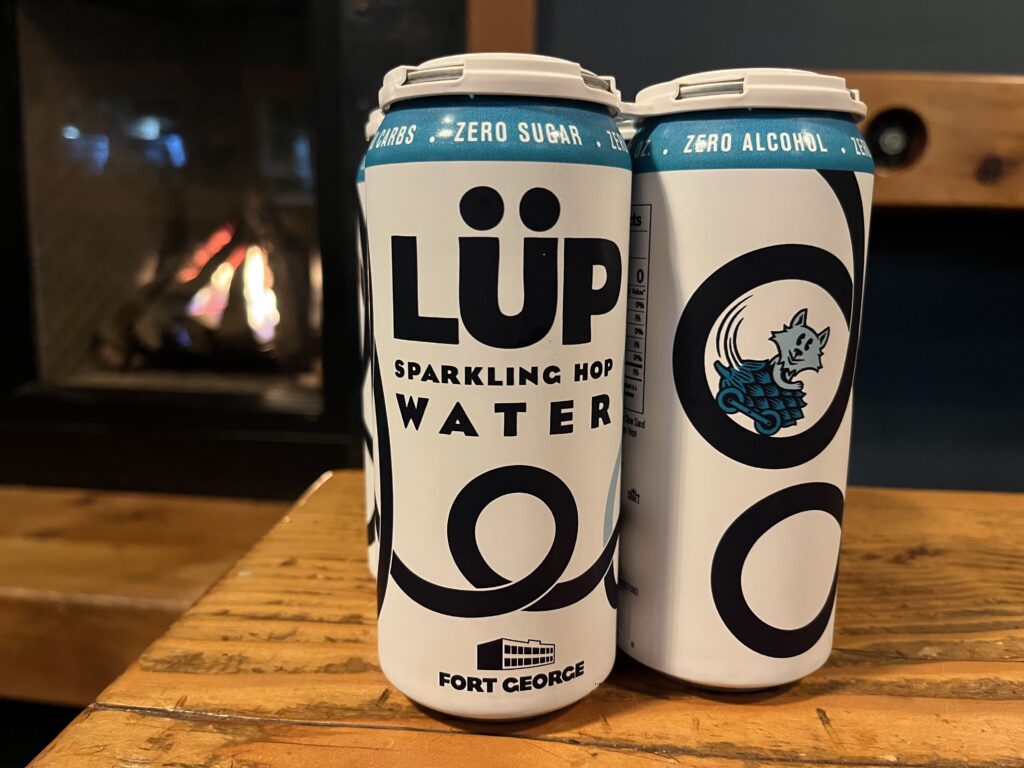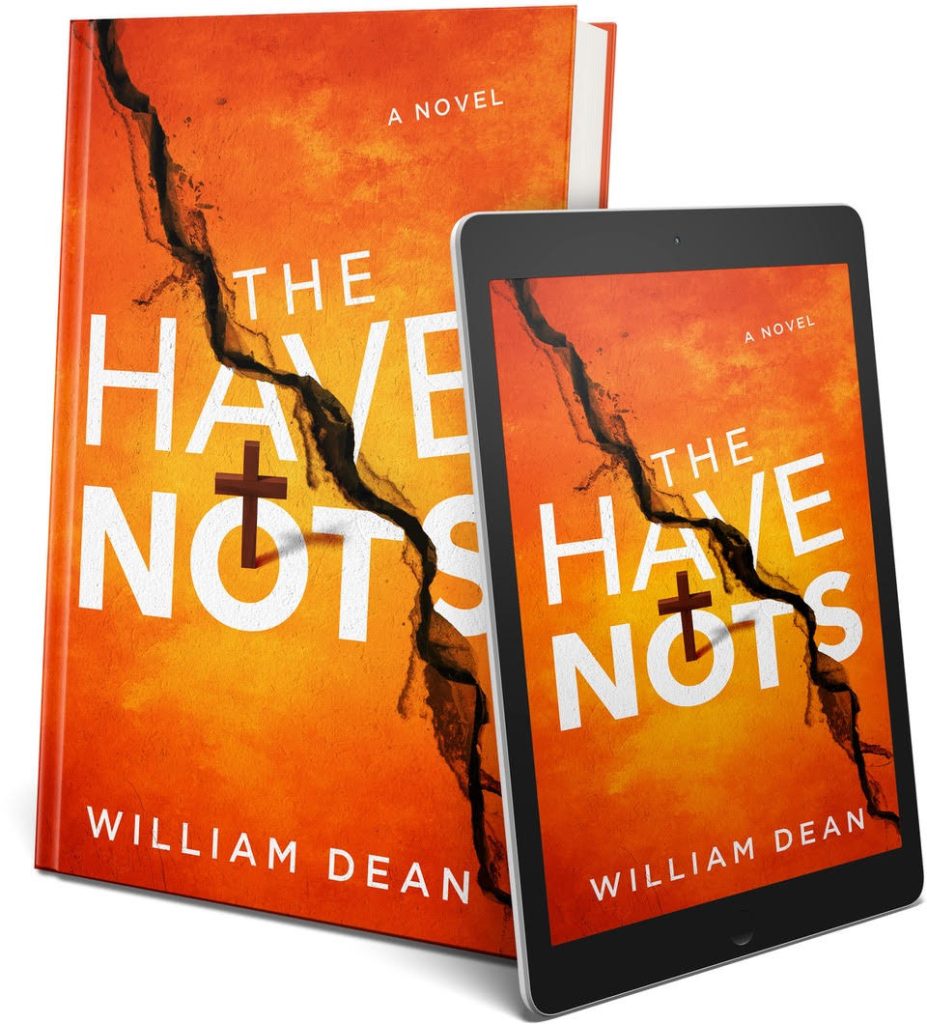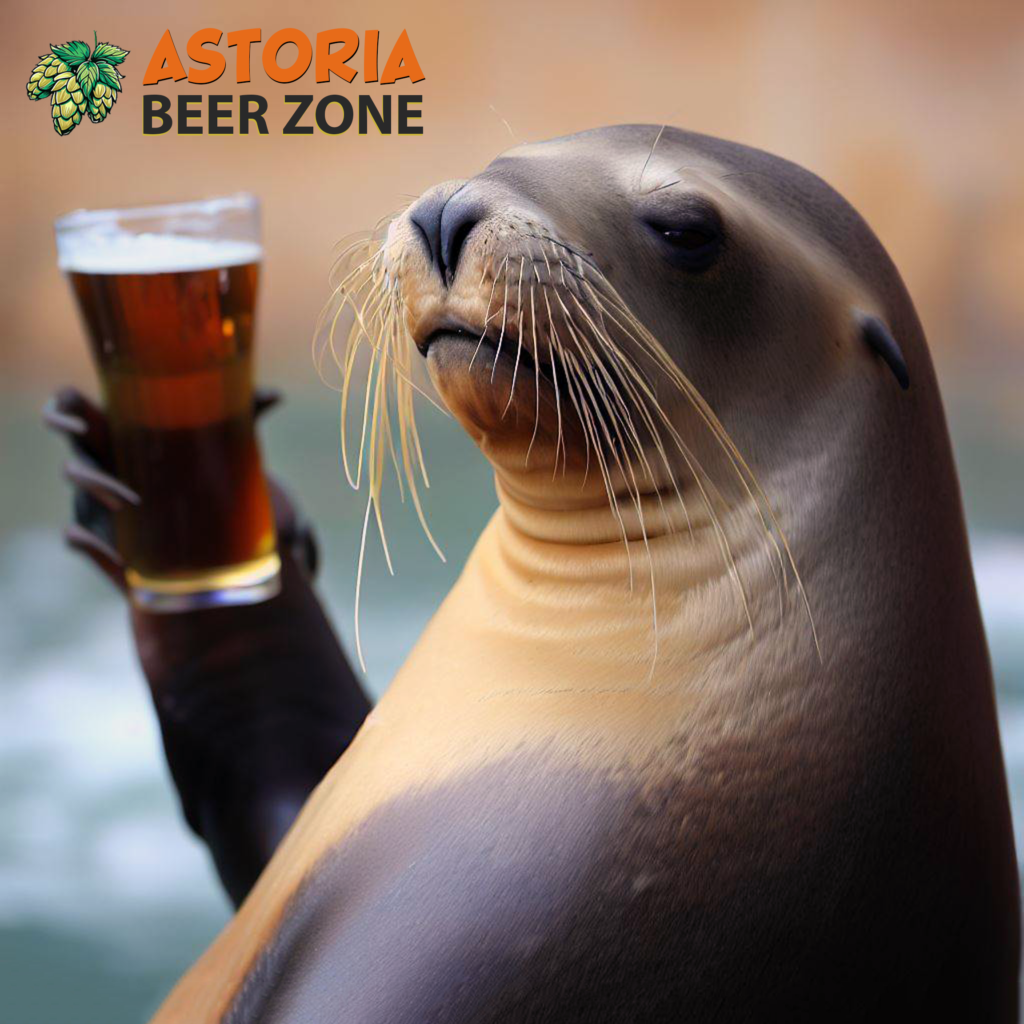You may only now be hearing about hop water, a beer alternative made largely by craft breweries.
The craze started about five years ago and is now a multimillion-dollar niche fueled by major players in the beer industry, including Sierra Nevada, Lagunitas and Revolution.
On the North Coast, Pelican Brewing based in Pacific City was the first to can hop water. Now Astoria’s biggest brewery has entered the market.
Fort George recently introduced LüP, a sparkling water flavored only by hops. It’s the first non-alcoholic beverage to come off the canning line, which makes it a fairly big deal.
The timing of the hop water release – during Dry January – was no accident.
Breweries are scrambling to find NA alternatives that can lure younger, health-conscious drinkers and also give beer lovers a way to extend brewpub and taproom visits without getting drunk.
“You can use this as a spacer,” Fort George spokesman Brian Bovenizer says of LüP. “And it’s not just the alcohol that, in excess, isn’t the best for you. It’s the carbs and calories that you’re getting from beer. This helps break up that.”
So, what exactly is hop water?
Essentially, it’s carbonated water that’s infused with hops in a process known as “dry hopping.” Fruit extract is a common addition.
Unlike NA beers, there are no calories, sugar or carbs. There’s also no pressure to get taste, color and aroma to match a regular beer, and no expensive equipment needed to remove the alcohol.
LüP (pronounced “loop”) derives its flavor from a blend of three hops: Citra and Citra Cryo, plus a touch of Mosaic.
That seems simple, but Bovenizer says it took brewers months of testing to settle on a recipe. It’s still a work in progress, with the Mosaic hops being added so recently they couldn’t make the ingredients list on the can label.
Even the level of carbonation (those rising bubbles) had to be honed and repeatedly sampled, since it was much higher than anything Fort George, founded in 2007, previously made.
***
Served in a tall glass, LüP arrives bubbly, with a slight green tint.
Bring it close and you’ll catch the unmistakable aroma of hops, with subtle citrus, pine and earth notes.
It goes down crisp and refreshing like a seltzer, but light on the palate unlike its other cousin, soda pop.
The name is short for lupulin, the active ingredient in hops that gives beer much of its aroma and flavor. To drive the point home, the label designed by Fort George artist Will Elias features a drawing of a wolf driving a hop car around a series of loops.

Asked why the brewery was slow to join the craze, Bovenizer says there simply wasn’t much enthusiasm when the idea was first pitched a couple of years ago.
“Most of what was out there didn’t taste very good to me,” he says.
But then Portland’s Ruse Brewing released a tasty version that changed minds. When Bovenizer and head brewer Michal Frankowicz inquired further, Ruse brewers said their beverage started with a basic recipe from Oregon State University’s fermentation sciences program.
That became the starting point for the Astoria delegation.
Today, LüP is being made at the waterfront facility, where pasteurization standards had to be met for the first time. Once the water in the tank is carbonated, hops are infused for eight to 16 hours.
Because the batches aren’t fermented like beer, Bovenizer says hop water can be produced from start to finish in a couple of days.
***
Craft beer consumption has plateaued nationally, with young adults leading an alcohol-moderation trend.
A Gallup poll published in August found that 62 percent of adults under 35 say they drink alcohol, down 10 percentage points from 20 years ago.
That’s a big part of why breweries have been racing to offer tap list alternatives, from NA beer to seltzer and hop water. Not just for Dry January, but year-round.
Nationwide sales of hop water are now surpassing $14 million a year, according to one industry report.
HOP WTR, a non-beer company based in California that helped create the wave, remains one of the leading retailers, using a proprietary blend of four hops. The company touts the ability of its product to relieve both stress and hangovers.
Most breweries have avoided making such claims.
Fort George intends to spend a fair amount of time introducing the new beverage, which may seem strange to many people.
A number of tastings are planned, and there will be plenty of free cans on hand at next month’s Festival of Dark Arts, an annual celebration of stouts.
Fort George has priced LüP at $10 a four-pack (16-ounce cans, available at the Duane Street merch store) and $4 a pint at its taproom and brewpub.
Bovenizer says it’ll be a while before the product reaches supermarkets, calling the limited early release a “soft opening.” In the meantime, the door is open to further experimentation, with other hop combinations and added fruit flavors a distinct possibility.
Think Fruit LüP.
“We’re starting small and seeing where it goes,” he says.




